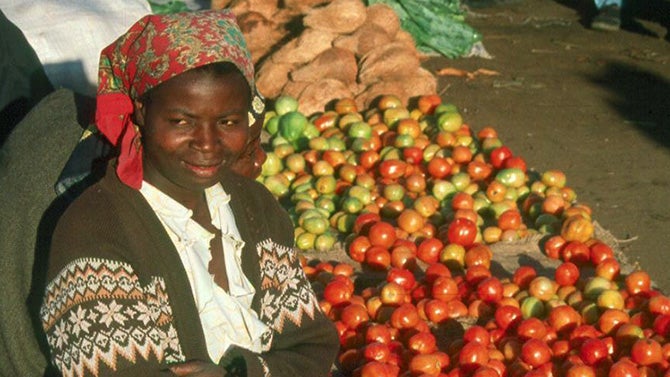
Whenever I drive along the EN1 North-South highway that cuts across Mozambique, I notice with satisfaction the long lines of local villagers in Gaza Province selling fruits and vegetables, processed cashew nuts, maize, manioc -- you name it -- in unequivocal and clear abundance.
As I drive pass a primary school dangerously bordering the highway, I notice joy in children’s face on their way back or to school wearing the characteristic blue marine top and dark blue skirts and pants. This is rural Mozambique, I think with pride, home to three quarters of Mozambicans. I pass through a village called Macia and take a right turn into Bilene beach resort, just some two hour drive off Maputo. Suddenly I realize how the images of abundance I just saw are a vivid negation of statistics that often tell a shockingly different story of rural Mozambique, one that is plagued by malnutrition, stunting, and even famine.
My thoughts turn to some of the findings of the Mozambique’s Systematic Country Diagnostic (SCD), a World Bank strategic document which will inform the country’s new Country Partnership Framework. The SCD names Gaza Province, along with several other provinces in the northern part of the country, amongst the poorest of all. It means that the seemingly joy of life in the face of rural residents I see in my road trips actually tell a misleading story about this province and its people’s welfare.
Then I think about what I often see in Gaza in the months following the typically long Mozambican rainy season, which is just a month or two away; scenes of desolation, war-like destruction, and above all, no smiling children and no one selling anything along the streets.

As a native Mozambican, I know that most of the hardships endured by the locals and behind the poverty figures for the Gaza have to do with the severity and inclemency of the weather and its negative impact on the province’s infrastructure and people’s wellbeing. Recurrent flooding is the biggest of these problems, but those who live in Gaza and throughout the country must also withstand the threat of drought, disease outbreaks and even cyclones. In that moment, one thing becomes clear to me: climate change is to blame. Unless we collectively as world citizens do something, those smiling faces I saw in Gaza Province, and other remote places affected by climate-related hazards will always be short-lived.
Mozambique, as with most Sub-Saharan African countries, needs more adaptation to manage climate challenges that exist now, and mitigate the risk of those challenges in the future. The World Bank’s new Africa Climate Business Plan outlines several concrete actions to increase climate resilience and low-carbon development in Sub-Saharan Africa. By highlighting more than a dozen high priority areas where governments can invest in development that will adapt to the changing climate, the plan aims to bring attention to and accelerate the mobilization of resources needed to support the proposed actions.
But most importantly, these natural disasters have a human face and are felt more acutely among the poorest. The threat posed by climate change can be contained by adopting climate-smart development policies that encourage rapid and inclusive development and which takes into account climate change, targeted adaptation measures, and emissions reductions efforts that protect the poor. Without such action, climate change could push as many as 43 million Africans into poverty by 2030 and I believe among them, a great number of Mozambican poor.


Join the Conversation